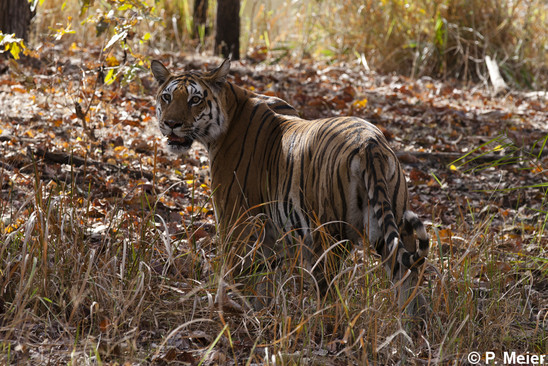Tiger
Bengal tiger (P. t. tigris)
According to the revised taxonomy of the Felidae, the tiger subspecies Panthera tigris tigris also includes the subspecies Panthera tigris virgata, Panthera tigris altaica, Panthera tigris amoyensis, Panthera tigris corbetti and Panthera tigris jacksoni.
The former subspecies P. t. tigris (without including P. t. virgata, P. t. altaica, P. t. amoyensis, P. t. corbetti and P. t. jacksoni) was classified as Endangered in the IUCN Red List. Its range includes Bangladesh, Bhutan, India, and Nepal. India is home to the largest number of Bengal tigers and the largest number of tigers among all tiger range states. Early in the 20th century, it was suggested that it was possible that there were 40,000 tigers in India. In 1972 an official census found positive evidence of fewer than 2,000 tigers located in four main areas of forest: the foot of the Himalayas in north and north-eastern India, the forests of central and eastern India, and a narrow strip paralleling the south-western coast. An intensive conservation programme, Project Tiger, was started shortly thereafter and its 1989 census estimated numbers nationwide at 4,334. Widespread poaching has occurred since the 1990s and the last census in 2010 in India (reported in March 2011) estimated a population of 1,706 tigers (with a range of 1,571-1,874). In Bangladesh, the population was estimated to be 440, in Nepal 155 and in Bhutan 75. The total population of Bengal tigers is estimated to be fewer than 2,500 animals with no subpopulation larger than 250.


